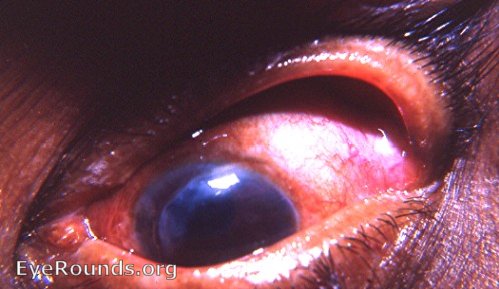EyeRounds Online Atlas of Ophthalmology
Contributor: William Charles Caccamise, Sr, MD, Retired Clinical Assistant Professor of Ophthalmology, University of Rochester School of Medicine and Dentistry
*Dr. Caccamise has very generously shared his images of patients taken while operating during the "eye season" in rural India as well as those from his private practice during the 1960's and 1970's. Many of his images are significant for their historical perspective and for techniques and conditions seen in settings in undeveloped areas.
Category: Cataract
The von Graefe incision in cataract surgery: an historical note

Until the acceptability of the keratome-scissors can opener method in cataract surgery after the early 1940s, the sine qua non of surgical technique was mastery of the von Graefe knife. With the increased popularity of sutures - especially the pre-placed sutures like MacLean's, it became virtually impossible for the occasional cataract surgeon to develop the necessary skill required to make an acceptable von Graefe knife incision. Dr. Caccamise offers the following analysis of the photograph: The surgeon most likely was not ambidextrous. Holding the knife in his right hand, he introduced the knife into the anterior chamber at 9 o'clock. He was unable to withdraw the knife at 3 o'clock but withdrew it closer to 1:30. Normally, the ambidextrous von Graefe surgeon will switch to his left hand so that he can enter the left eye at 3 o'clock and and exit at 9 o'clock. If the switching of hands is not done, the nose will become an impediment in operating on the OS.The photograph shows the horrors of the von Graefe knife incision: a gaping, ill-placed, and ill-made incision. All of this could have been overcome by the use of post-placed sutures. The surgeon in this case did not attempt to rectify the situation with sutures. He merely patched both eyes for several days and left the rest to nature and Kismet.

Ophthalmic Atlas Images by EyeRounds.org, The University of Iowa are licensed under a Creative Commons Attribution-NonCommercial-NoDerivs 3.0 Unported License.


